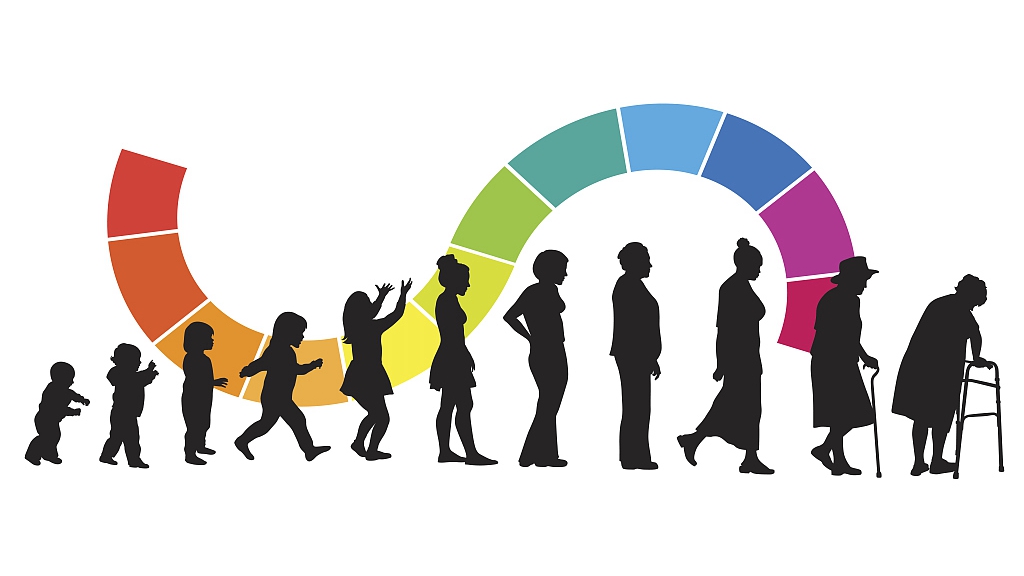Life Expectancy and Death: Understanding the Journey of Life.
Life expectancy and death are intrinsic parts of the human experience. They shape how we live, influence our decisions, and impact societies. Understanding these concepts is crucial for comprehending the human condition and planning for the future. This comprehensive exploration delves into the factors affecting life expectancy, the inevitability of death, and how society can cope with and prepare for these realities.
Understanding Life Expectancy

Life expectancy is a statistical measure indicating how long, on average, a person or population is expected to live based on current mortality rates. It varies widely across different regions, populations, and historical periods.
Factors Affecting Life Expectancy
1. Healthcare Access and Quality
- Preventive Care: Access to vaccinations, screenings, and regular check-ups can prevent many diseases or catch them early, significantly affecting life expectancy.
- Medical Advancements: Innovations in medical technology and treatments have dramatically increased life expectancy over the past century.
2. Socioeconomic Status
- Income Levels: Higher income often correlates with better access to healthcare, nutrition, and living conditions, which contribute to a longer life expectancy.
- Education: Educated individuals tend to make healthier lifestyle choices and have better access to information and resources that promote health.
3. Lifestyle Choices
- Diet and Nutrition: A balanced diet rich in fruits, vegetables, and lean proteins promotes longevity, while diets high in processed foods and sugars can lead to chronic diseases.
- Physical Activity: Regular exercise is crucial for maintaining cardiovascular health, muscle strength, and mental well-being.
- Smoking and alcohol consumption: These habits are major risk factors for diseases such as cancer, heart disease, and liver disease.
4. Genetics
- Hereditary Factors: Genetics play a significant role in determining susceptibility to certain diseases and overall longevity.
5. Environmental Factors
- Pollution: Exposure to pollutants, such as air and water contamination, can lead to chronic respiratory and cardiovascular diseases.
- Living Conditions: Safe housing, clean water, and adequate sanitation are fundamental to maintaining health and increasing life expectancy.
6. Public Health Policies:
- Vaccination Programs: Public health initiatives that provide widespread immunizations can prevent outbreaks of deadly diseases.
- Regulations and Safety Standards: Policies that regulate food safety, workplace conditions, and environmental protections contribute to public health.
Global Variations in Life Expectancy

Life expectancy varies significantly around the world due to the aforementioned factors. For example:
- High-Income Countries: Countries with advanced healthcare systems, high education levels, and strong economies, such as Japan, Switzerland, and Australia, tend to have higher life expectancies.
- Low-Income Countries: In countries with limited access to healthcare, poor nutrition, and unstable political environments, such as several in Sub-Saharan Africa, life expectancy remains significantly lower.
The Inevitability of Death

Death is the ultimate certainty in life. It is a universal experience that every living being will face. Understanding and accepting the inevitability of death can profoundly impact how we live our lives.
The Biological Process of Dying
1. Aging and Cellular Senescence:
- Telomere Shortening: As cells divide, the protective caps at the end of chromosomes (telomeres) shorten, eventually leading to cellular senescence and death.
- DNA Damage: Accumulation of DNA damage over time can lead to cellular dysfunction and contribute to aging and death.
2. Systemic Decline
- Organ Failure: As the body ages, organs can lose their functionality, leading to conditions such as heart failure, kidney failure, and respiratory failure.
- Immune System Weakening: The immune system becomes less effective with age, making the body more susceptible to infections and diseases.
3. Chronic Diseases
- Cancer: Uncontrolled cell growth can lead to tumors that invade and damage body tissues.
- Cardiovascular Diseases: Conditions like hypertension and atherosclerosis can lead to heart attacks and strokes.
Psychological and Cultural Perspectives on Death

1. Fear of Death
- Thanatophobia: The fear of death or dying can cause significant anxiety and impact an individual’s quality of life.
- Coping Mechanisms: Many people turn to religion, spirituality, or philosophy to find comfort and meaning in the face of mortality.
2. Cultural Attitudes
- Western Perspectives: In many Western cultures, death is often viewed with fear and sadness, and discussions about it can be considered taboo.
- Eastern Perspectives: In some Eastern cultures, death is seen as a natural part of the life cycle, with beliefs in reincarnation or the afterlife providing comfort.
3. End-of-Life Care
- Palliative Care: Focuses on providing relief from the symptoms and stress of serious illness, aiming to improve quality of life for both the patient and their family.
- Hospice Care: Provides compassionate care for those in the final stages of terminal illness, focusing on comfort rather than curative treatment.
Preparing for the End of Life

Accepting the inevitability of death encourages proactive planning to ensure that one’s final days are lived with dignity and peace.
Legal and Financial Planning
1. Wills and Estates
- Creating a Will: A will ensures that your assets are distributed according to your wishes and can prevent disputes among heirs.
- Estate Planning: Involves organizing your assets and finances to maximize their value for your beneficiaries and minimize taxes.
2. Advance Directives:
- Living Will: Specifies your preferences for medical treatment in case you become unable to communicate your decisions.
- Durable Power of Attorney for Healthcare: Designates someone to make healthcare decisions on your behalf if you are incapacitated.
Emotional and Psychological Preparation

1. Discussing End-of-Life Wishes
- Open Conversations: Talking openly with family and loved ones about your end-of-life preferences can ensure that your wishes are understood and respected.
- Counseling and Support: Professional counseling can help individuals and families cope with the emotional aspects of end-of-life planning.
2. Legacy and Remembrance:
- Creating a Legacy: Many people find comfort in leaving a legacy, whether through charitable donations, writing memoirs, or creating lasting memories with loved ones.
- Memorials and Funerals: Planning your funeral or memorial service can relieve your family of the burden and ensure that it reflects your personal values and wishes.
Societal Implications of Life Expectancy and Death

Understanding life expectancy and death has profound implications for society as a whole, influencing public policy, healthcare systems, and community support structures.
Healthcare Systems
1. Aging Populations
- Increased Demand: As life expectancy increases, healthcare systems face higher demand for services related to aging, such as geriatric care, chronic disease management, and long-term care.
- Resource Allocation: Efficient resource allocation is crucial to address the healthcare needs of an aging population without overburdening the system.
2. Palliative and Hospice Care:
- Expansion of Services: As the population ages, there is a growing need for palliative and hospice care services to provide quality end-of-life care.
- Training Healthcare Professionals: Ensuring that healthcare professionals are trained in palliative care principles can improve the quality of care for terminally ill patients.
Public Policy

1. Social Security and Pension Systems
- Sustainability: Governments must ensure the sustainability of social security and pension systems as life expectancy increases, which may involve policy reforms and financial planning.
- Retirement Age: Adjusting the retirement age to reflect longer life expectancy can help balance the financial strain on public pension systems.
2. Public Health Initiatives
- Preventive Measures: Public health initiatives focused on preventive care, such as anti-smoking campaigns, vaccination programs, and healthy lifestyle promotions, can improve life expectancy.
- Health Education: Educating the public about healthy aging, chronic disease prevention, and end-of-life planning can empower individuals to make informed decisions.
Community Support

1. Support Networks
- Community Programs: Local community programs can provide support for elderly individuals, including social activities, transportation services, and assistance with daily tasks.
- Caregiver Support: Providing resources and support for caregivers, who often face physical, emotional, and financial challenges, is essential for maintaining the well-being of both caregivers and care recipients.
2. Cultural Competence
- Diverse Needs: Recognizing and respecting the diverse cultural, religious, and personal beliefs about death and dying can ensure that end-of-life care is sensitive and appropriate for all individuals.
- Inclusivity: Promoting inclusivity in healthcare and community services ensures that everyone receives the care and support they need, regardless of background.
Final Thought
Life expectancy and death are fundamental aspects of the human experience, deeply influencing how we live and how societies are structured. By understanding the factors that affect life expectancy and accepting the inevitability of death, we can make informed decisions about our health, legal matters, and end-of-life care. Embracing these realities allows us to live more meaningfully, appreciate the time we have, and ensure that our final days are spent with dignity and peace. Through proactive planning, societal support, and compassionate care, we can navigate the complexities of life expectancy and death with resilience and grace.